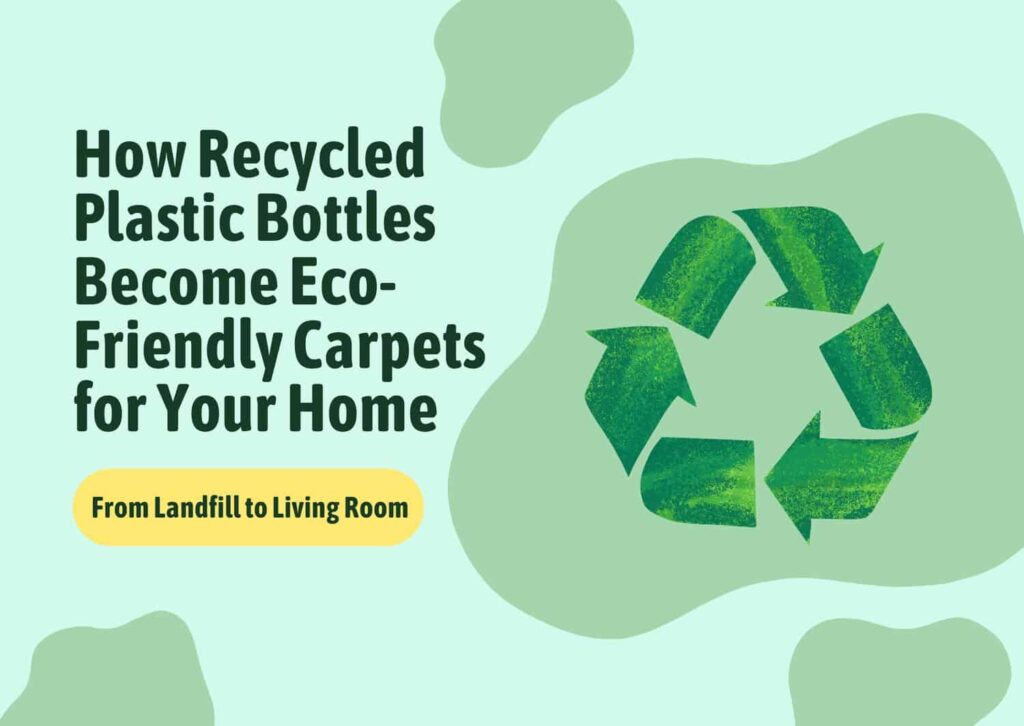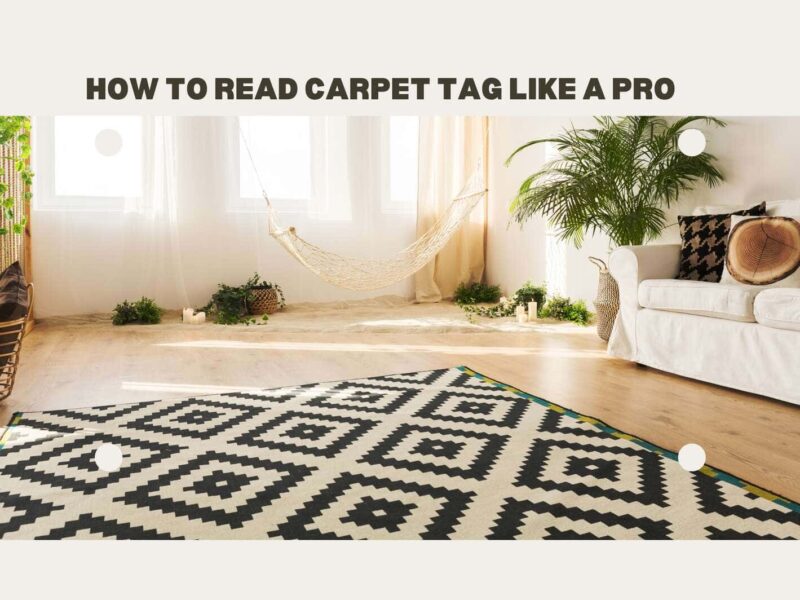
How Recycled Plastic Bottles Become Eco-Friendly Carpets for Your Home
How Recycled Plastic Bottles Become Eco-Friendly Carpets for Your Home https://www.carpetgurus.com/wp-content/uploads/Eco-Friendly-Carpets-1024x726.jpg 1024 726 Marvin Wallace Marvin Wallace https://secure.gravatar.com/avatar/dfba7fb04287da7d901f561fada57000?s=96&d=mm&r=g- Marvin Wallace
- no comments
The plastic water bottle I crushed this morning might end up beneath my feet in five years. Not in some dystopian scenario where garbage overtakes our homes, but woven into the very carpet I’ll vacuum on Sunday mornings while contemplating my life choices.
Walking through a carpet showroom last month, I noticed something peculiar: the plush beneath my shoes felt identical to conventional carpeting, yet the label read “100% recycled content.” My skepticism kicked in immediately.
Years of environmental promises have taught me to question green marketing claims. But this wasn’t greenwashing—it was textile engineering at its most ingenious, transforming ocean-bound fishing nets and discarded PET bottles into something you’d actually want in your home.
The Quiet Revolution in Flooring

The carpet industry has quietly undergone a revolution. What once seemed impossible—creating luxurious, durable flooring from trash—has become not just feasible but increasingly mainstream. Major manufacturers now produce eco-friendly carpets from recycled plastic bottles, abandoned fishing gear, and other post-consumer waste. The concept sounds almost absurd until you consider the chemistry: both traditional carpet fibers and plastic bottles share a common ancestor in polyethylene terephthalate, better known as PET.
From Trash to Textile: The Manufacturing Process
The process itself reads like industrial alchemy. Collected plastic bottles get sorted, cleaned, and shredded into tiny flakes. These flakes undergo intense heating until they melt into a viscous liquid, which then gets extruded through specialized nozzles to create continuous fibers. The resulting strands—chemically identical to virgin polyester—get spun into yarn, tufted into backing, and transformed into the carpet squares gracing corporate offices and living rooms worldwide.
Interface, a Georgia-based flooring giant, pioneered this transformation in the 1990s when founder Ray Anderson experienced what he called his “spear in the chest” moment after reading about environmental destruction. The company began pulling nylon fishing nets from coastal communities in the Philippines and Cameroon, processing them into carpet tiles through their Net-Works program. To date, they’ve diverted over 850 tons of nets that would otherwise strangle marine life or decompose into microplastics.
The Environmental Impact: Numbers That Matter
The environmental mathematics proves compelling. Manufacturing carpet from recycled materials uses approximately 59% less energy than producing virgin nylon. Each ton of recycled carpet fiber prevents roughly two tons of carbon dioxide from entering the atmosphere. A single carpet tile made from reclaimed fishing nets can incorporate material from nets that might have killed dozens of sea turtles or dolphins. The carbon footprint reduction becomes even more dramatic when you consider transportation—many manufacturers now source recycled materials regionally rather than importing virgin petroleum-based fibers from overseas.
The Contamination Challenge
Yet producing high-quality recycled carpets presents formidable challenges that keep engineers awake at night. Contamination tops the list. That plastic bottle rolling around your car’s floorboard might have contained motor oil before water. Fishing nets carry salt, biological matter, and sometimes toxic anti-fouling chemicals. Each contaminant affects fiber quality, color consistency, and durability.
“We’re essentially running a sophisticated sorting operation before we even begin manufacturing,” explained a production manager I spoke with at a Pennsylvania recycling facility, where workers manually inspect thousands of pounds of material daily. “One motor oil bottle in a batch of ten thousand can discolor an entire production run. The quality control becomes exponentially more complex than working with virgin materials.”
Durability: Can Recycled Carpets Take a Beating?
The durability question haunts the industry. Carpets endure remarkable abuse—foot traffic, furniture dragging, pet accidents, spilled wine during dinner parties gone wrong. Recycled fibers must match the resilience of conventional materials or risk undermining consumer confidence in sustainable products. Early recycled carpets earned unfortunate reputations for matting quickly or fading under sunlight, setbacks that took years of research to overcome.
Modern recycled carpet technology has largely conquered these obstacles through innovations in fiber structure and chemical treatments. Manufacturers now add UV stabilizers and stain-resistant coatings specifically formulated for recycled content. Some companies blend recycled fibers with smaller percentages of virgin material to enhance performance while still achieving significant sustainability goals. The result feels indistinguishable from traditional carpeting—I’ve conducted my own highly scientific test of walking across both types in socks, and I genuinely cannot tell the difference.
Turning Limitations Into Design Features
Color consistency presents another technical headache. Recycled plastic bottles come in various hues—clear, green, blue—making it difficult to achieve uniform coloring without excessive dye. Some manufacturers have gotten creative, embracing the natural color variations to create carpets with intentional multi-tonal effects. What began as a limitation became a design feature, proving that constraint breeds innovation.
Closing the Loop: Carpet-to-Carpet Recycling
The circular economy potential extends beyond just using recycled materials. Several manufacturers now accept old carpets for recycling, creating a closed-loop system where your worn living room carpet becomes someone else’s new office flooring. Mohawk Industries processes over 250 million pounds of recycled material annually, including reclaimed carpets. Though carpet recycling rates still hover around 5%—embarrassingly low—the infrastructure continues expanding.
Cost remains a double-edged sword. Eco-friendly carpets often price competitively with mid-range conventional options, making them accessible to average consumers rather than just eco-warriors with unlimited budgets. However, the collection, sorting, and processing infrastructure requires substantial upfront investment that smaller manufacturers struggle to justify.
Beyond Flooring: The Ripple Effect
The fishing net programs deserve particular attention for their dual impact. Beyond creating carpet fibers, these initiatives provide income to impoverished coastal communities while protecting marine ecosystems. Fishermen in developing nations receive payment for collecting abandoned nets—called ghost nets for their invisible menace—turning environmental hazards into economic opportunity. The model demonstrates how sustainable manufacturing can create ripples far beyond factory walls.
A Revolution Underfoot
Standing in my living room now, I look down at the carpet with different eyes. Somewhere in those fibers might be a bottle that once crossed an ocean, a fishing net that nearly ended a whale’s migration, or packaging that would have poisoned soil for centuries. Instead, they’ve found redemption beneath my coffee table, proving that trash isn’t destiny—it’s just material waiting for imagination.
The innovation happening in carpet manufacturing offers a template for other industries struggling with waste. If we can transform ocean garbage into something comfortable enough for bare feet, what else becomes possible? The revolution underfoot might just be the foundation for broader change.
If you buy something on this page, we may get a small share of sale at no additional cost to you. We only recommend products that we have used ourselves and feel are really useful, not because of the limited compensation from the links through our posts.
- Post Tags:
- carpet
- eco friendly
- floor
- home
- rug
- Posted In:
- Must Read Stories
Marvin Wallace
Marvin Wallace is widely published and recognized as an expert in emerging technologies as well as a frequent speaker at industry conferences. You can visit him at www.CarpetGurus.com
All stories by: Marvin Wallace






Leave a Reply